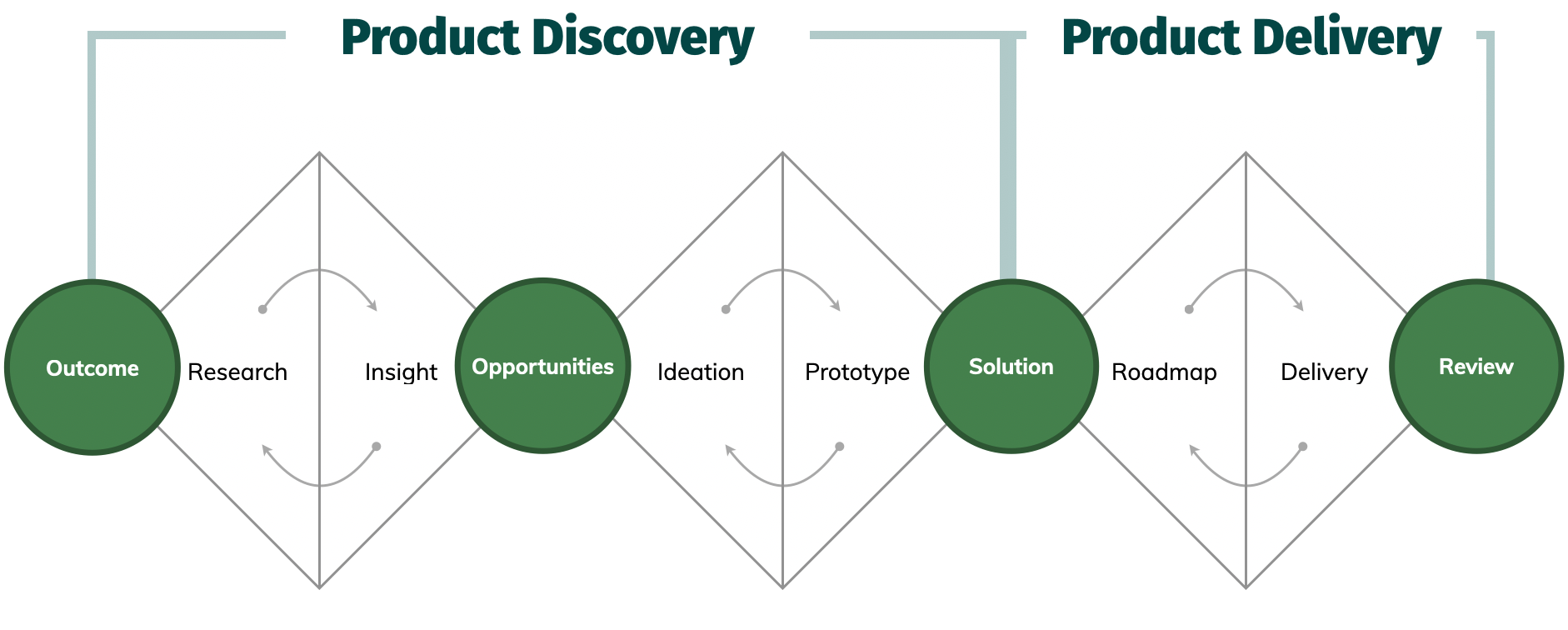How to imagine Product Discovery
Product Discovery is the pre-programming phase that includes research and design activities for a later programmed function or product. The main feature of effective Product Discovery is to create a product or a new function concerning the identified data and knowledge of user needs.

You most often obtain user needs through user research which will help to discover your users' needs, wishes, and concerns and then link this information to the number of users from your target group who are affected. This connection effectively shows what you should currently focus on.
Is the statement true or only a presumption?
You should not base your decisions on what to create on the assumption that "users might want this." Why? You could take a path that does not meet the real needs of your users.
There is a huge difference between an assumption and reality. That's why you need to talk about assumptions in Product Discovery. The difference between saying, "Everyone uses Facebook" and "I assume everyone has Facebook" is clear. The first sentence is given as a fact and should be taken as such (if it is true); the second sentence, on the other hand, is only a presumption that can be refuted or confirmed. Of course, this is only applicable if it is important for our project.
Assumptions often serve as a basis for what we will examine in user research. In the beginning, we will collect the assumptions associated with the topic that we want to address. We will determine their importance and evaluate how unknown their truth is to us. Subsequently, we examine the most important assumptions at the time that are unknown to us (important and known assumptions do not need further investigation).
The second and no less important factor of effective Product Discovery is the connection of research and goals setting.
You always need to know where you are going
The product team's purpose is not just to create an application, website, or e‑shop. Every team and product has a goal. This goal can be e. g. increasing sales, collecting leads for the sales department, or even improving the usability of the application. You always need to know what is important for you. If you have OKRs in place in your company, you probably know what we are talking about. However, there is no need to have OKRs right away; you only need to define a clear and measurable goal.
On the contrary, it is necessary to avoid setting goals that only look like goals but are not. These include "we need to create an application," "it is necessary to redesign the filter," etc.
The goal must be measurable and beneficial. If you increase sales in the first case, it is great for the company. In the second case, if you create an application, you have it, but what did that application bring? This does not mean that you cannot create an application as a result, but its creation should not be your primary goal. However, if your goal is to bring in new customers by creating an application your customers want, then this is exactly what you need.
So how do you fit it all together to make sense?
How to navigate research and goals?
The answer is the Opportunity Solution Tree. It is a method created by Teresa Torres – the connection of goals with users' knowledge serves to form opportunities. Subsequently, these opportunities are further linked to various suggestions on how to address the opportunity.
Thanks to this visualization, you have an overview of all identified opportunities that you can pursue. At the same time, prioritize them according to importance. It will help you to decide which opportunity you should currently address. Since you always place the identified opportunities under a relevant goal, you can't embark on something that does not lead to the established goals.
On the contrary, after you have determined that an opportunity is interesting for you, it is ideal for developing as many different solutions as possible. From these, you choose one which is good for users, fulfills your goal, and at the same time is not difficult to develop.
Conclusion
This is just a basic outline of what Product Discovery solves. In the following articles, we will focus more on this topic. Finally, I would like to mention that Product Discovery is definitely not the answer for creating all types of projects or products. You should use it mainly when creating a product, and you do not know exactly what it should be, but you need close contact with users. It is not suitable for projects where you know what you want to create, and your assignment will not change during the course, such as transcribing a 1: 1 backend solution into new technology. In this case, this method does not make sense. On the contrary, this direction is very suitable for creating most mobile or web applications.


